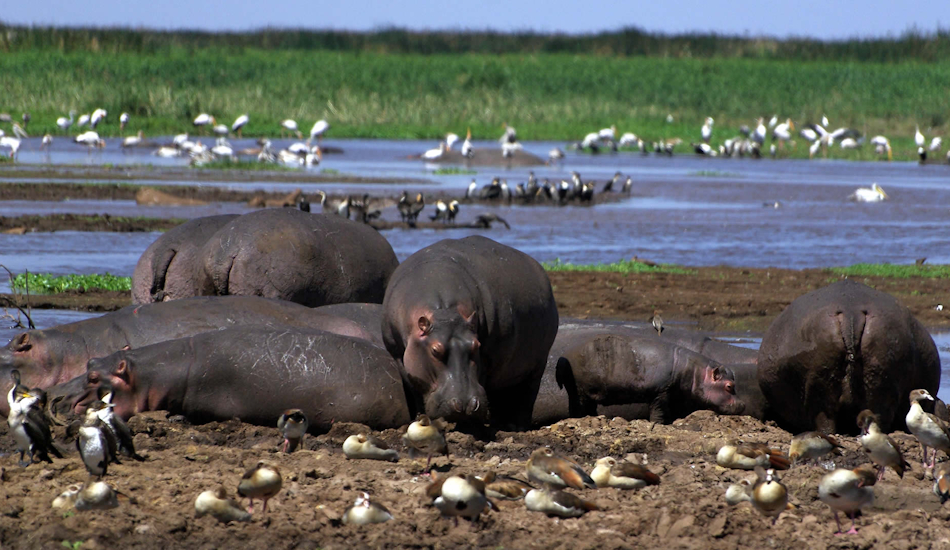Overview
A 9-day “Best of Kenya and Tanzania Budget Safari” is a popular choice for travelers seeking to experience the highlights of East African wildlife without breaking the bank. While “budget” implies cost-saving measures, it doesn’t necessarily mean sacrificing incredible wildlife encounters.
Here’s an overview of what you can generally expect:
1. Focus on Key Parks:
- Kenya:
- Maasai Mara National Reserve: This is a non-negotiable for most Kenya safaris, even on a budget. You’ll likely spend 2-3 days here, maximizing game drives to witness the abundant wildlife and, if traveling during the Great Migration (roughly July-October), the dramatic river crossings.
- Lake Nakuru National Park: Often included for its accessible rhino population, Rothschild’s giraffes, and (historically) its flamingos (though flamingo numbers can vary depending on the lake’s water levels).
- Optional Kenya Parks: Some itineraries might swap Lake Nakuru for Lake Naivasha (for boat rides or walking safaris) or potentially include a brief stop at Amboseli National Park if the logistics align, offering views of Kilimanjaro.
- Tanzania:
- Serengeti National Park: A must-see, often for 2 full days, offering vast plains and exceptional wildlife viewing, including predators and the Great Migration (which moves between the Mara and Serengeti).
- Ngorongoro Crater: Another absolute highlight. Budget safaris will usually include a full-day game drive within the crater, known for its high density of wildlife and “Big Five” sightings.
- Lake Manyara National Park or Tarangire National Park: One of these will likely be included to round out the Tanzanian portion. Lake Manyara is known for its diverse birdlife and a chance to see tree-climbing lions (though rare). Tarangire is excellent for elephant herds, especially in the dry season.
2. Accommodation Style:
- Tented Camps (Budget/Mid-range): These are a staple of budget safaris. They offer a close-to-nature experience with permanent or semi-permanent tents that often have en-suite bathrooms (flush toilets and showers). While not “luxury glamping,” they provide comfort and often a great atmosphere. Examples include Enkorok Mara Camp in Kenya and Kati Kati Tented Camp in Tanzania.
- Basic Lodges/Hotels: In towns like Nairobi or Arusha (arrival/departure points), you’ll likely stay in clean, comfortable budget hotels. Outside the parks, you might find more traditional brick-and-mortar lodges.
- Public Campsites (Less Common for Combined Safaris): For the absolute lowest budget, some safaris might utilize public campsites within or just outside the parks, where you sleep in dome tents and share communal facilities. This is more common for Tanzania-only budget safaris.
3. Transportation:
- Shared 4×4 Safari Vehicles: This is crucial for budget safaris. You’ll typically share a pop-up roof 4×4 safari vehicle (usually a Land Cruiser or a sturdy safari van) with a small group (often 6-8 people). This significantly reduces costs compared to a private vehicle.
- Road Transfers: Most transfers between parks and across the Kenya-Tanzania border will be by road. This can involve long driving days.
- Border Crossing: You’ll cross the border, typically at Isebania/Sirari (between Maasai Mara and Serengeti) or Namanga (between Nairobi/Amboseli and Arusha/Northern Tanzania parks). This involves immigration formalities, and you’ll need valid visas for both countries (eVisas in advance are highly recommended to save time). A Yellow Fever vaccination certificate is also usually required.
4. What to Expect on a Budget Safari:
- Focus on Wildlife: The primary goal is wildlife viewing, so most of your time will be spent on game drives.
- Basic Comforts: Accommodation will be clean and functional, but don’t expect luxury amenities like swimming pools (though some budget camps might have them).
- Fixed Itinerary: Budget safaris often have less flexibility in their itineraries compared to private, higher-end safaris.
- Group Dynamics: You’ll be part of a group, so adaptability and a willingness to share experiences are key.
- Meals: Meals are usually included and are typically simple but hearty, often served buffet style at the camps/lodges. Packed lunches are common for full-day game drives.
- Cost-Saving Measures: Tour operators will choose more affordable accommodations, utilize shared transport, and often focus on fewer, but impactful, parks to keep prices down.
- Hidden Costs: Be aware of things not typically included in the upfront price: international flights, visas, travel insurance, tips for guides/staff, alcoholic beverages, and optional activities like hot air balloon rides.

